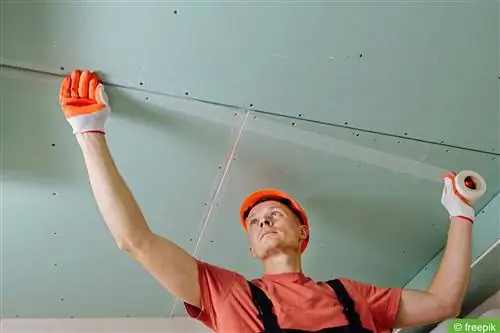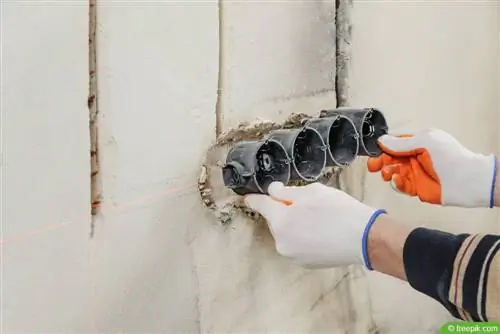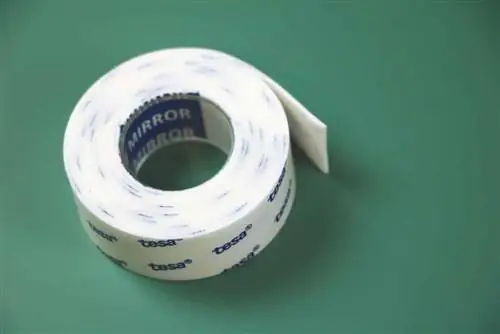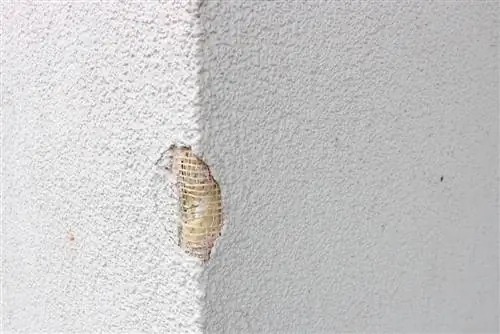- Author admin [email protected].
- Public 2023-12-17 03:39.
- Last modified 2025-01-24 12:45.
Rigips is versatile, comparatively easy to install and inexpensive. The benefits can be extended by using joint tape, as it reduces the risk of cracks and increases the service life.
Rigips without fabric tape
After attaching the panels, the joints between them must be closed. The same applies to gaps and other distances that arise, for example, from inserting lights or sockets. On the one hand, this is important for insulation. On the other hand, the appearance and stability benefit from the closed joints.
Introducing joint filler is sufficient for this if the conditions in the room are comparatively constant. These influences include:
- Humidity
- Temperature
Because this can cause plasterboard to contract or swell. Due to this property, the joints become larger or smaller and the filler is compressed or is under tension. This can create an uneven surface or result in cracks.
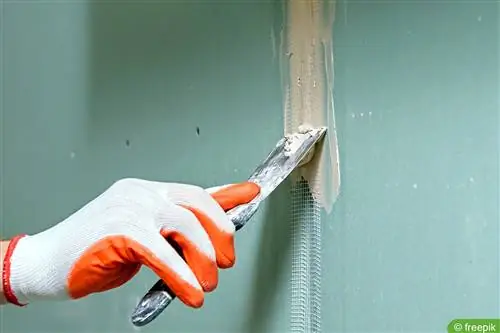
However, if the factors remain the same, this risk does not exist. The use of fabric tape is therefore not absolutely necessary.
Tip:
Special joint filler is usually sufficient if there are very small gaps or unevenness. It has properties that also prevent the formation of cracks.
Piplas with joint tape
Using fabric tape before filling initially seems like an unnecessary effort. However, this saves effort in the medium and long term. This is especially true if the following factors apply:
- larger joints or gaps
- Humidity varies significantly
- strong fluctuations in temperature
- numerous recesses
Tip:
In addition, the effort is only slightly increased by using joint tape. The strips are simply cut to the required length and attached. Nothing more is necessary to prevent cracks or at least reduce the risk of them.
Differences in spatula
There are significant differences in the joint tapes or strips. Self-adhesive versions are particularly practical for both professionals and laypeople. Although they are more expensive to purchase, they are much easier to install and require less effort. Laying is also cleaner and faster, as there is no need to prepare or clean any utensils.

Dry versions must be applied directly with filler. Alternatively, they can also press themselves into the previously spread mass. This requires a very precise dosage of the filler so that no excess has to be removed. The joints must therefore be removed beforehand. With a little practice, this can be done without any problems, which makes the use of dry versions of the fabric tapes particularly suitable for larger areas.
Apart from these crucial differences between the crack prevention strips, there are other criteria that are crucial.
When selecting joint strips, the following factors should therefore be taken into account:
- sufficient width of the band
- Breaking Strength
- low strength
- good bonding to the filler
- high quality
These decide whether the variant is suitable for use in filling and whether the result is as long-lasting as possible.

